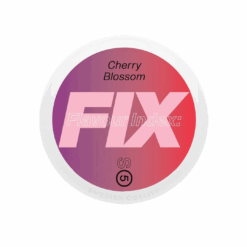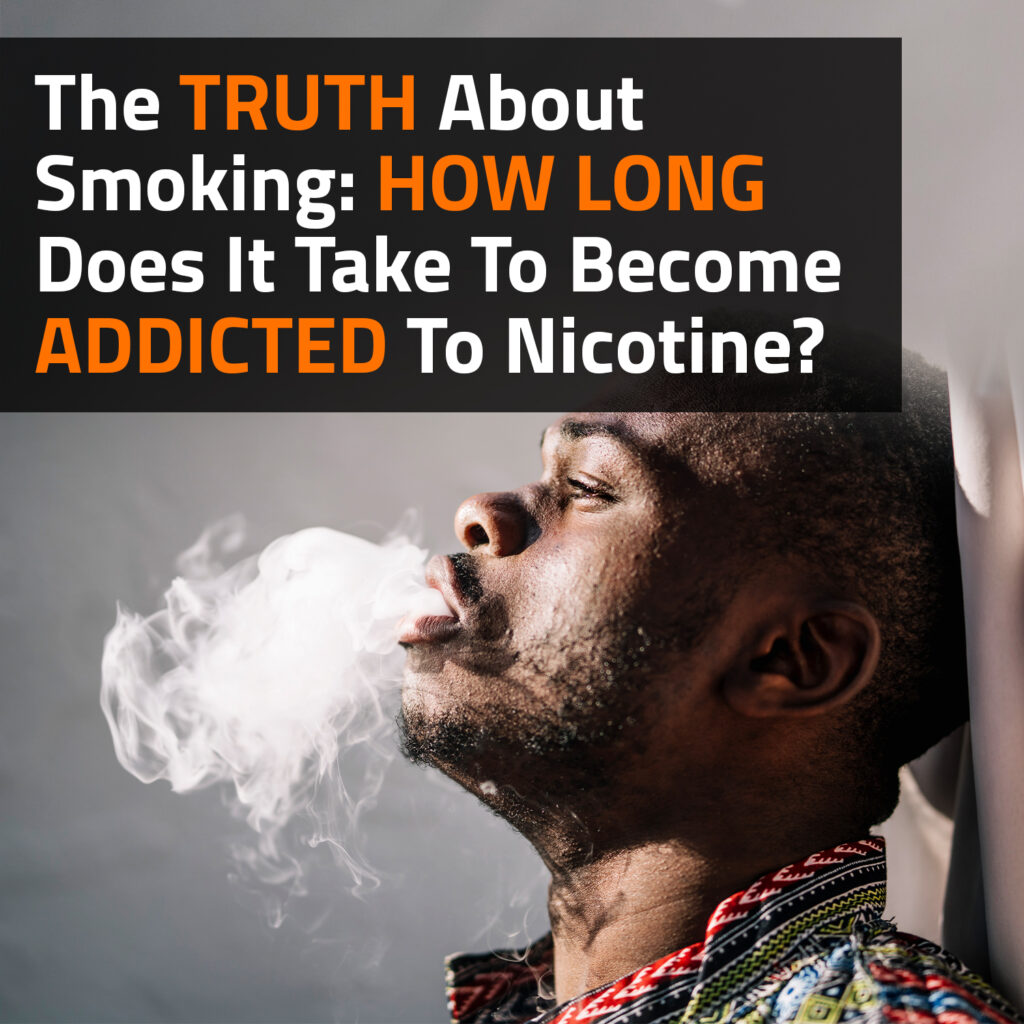Nicotine addiction is a widespread issue, deeply intertwined with tobacco use. Its grip can be so strong that even casual use quickly escalates into dependence. But how long does it take to become addicted to nicotine? Is it a matter of days, weeks, or months? Understanding the timeline and factors influencing nicotine addiction can help illuminate why the quitting process is so challenging and underscore the importance of awareness and prevention.
What Is Nicotine Addiction?
Nicotine addiction occurs when the body and brain become dependent on nicotine, a chemical that stimulates the brain’s reward system. Nicotine is found naturally in tobacco and is the primary reason tobacco use is so habit-forming.
When consumed, nicotine enters the bloodstream and quickly reaches the brain within seconds. It binds to receptors that release dopamine, the “feel-good” chemical, creating a sense of pleasure and relaxation. Over time, the brain adapts to the constant stimulation, requiring more nicotine to achieve the same effects – a hallmark of addiction.
The First Exposure: How Nicotine Hooks You
For many, nicotine addiction begins with the first smoking experience. Research shows that even a single exposure to nicotine can start altering brain chemistry, laying the groundwork for dependence.
The Brain’s Immediate Reaction
When nicotine is inhaled, it triggers a rapid release of dopamine. This creates an immediate sense of satisfaction or relief, which the brain associates with the act of smoking. This positive reinforcement encourages repeated use.
Early Signs Of Dependence
Studies suggest that signs of nicotine dependence can appear within a few days of regular use. Some people report cravings, irritability, or a strong urge to smoke or vape again after just one or two uses. The speed at which addiction develops varies, but for many, it happens alarmingly quickly.
Factors That Influence Addiction Timeline
The timeline for developing nicotine addiction is not universal as it depends on a range of factors, including individual biology, frequency of use, and the delivery method:
- Age: Young people are particularly vulnerable to nicotine addiction. Adolescents’ brains are still developing, making them more sensitive to nicotine’s effects. Studies show that teenagers can develop dependence within a few days or weeks of trying nicotine products.
- Genetics: Genetics also play a role in how quickly someone becomes addicted. Some individuals metabolise nicotine faster, leading them to use it more frequently to maintain its effects. Genetic predisposition to addictive behaviours can further increase susceptibility.
- Frequency of use: Casual use can quickly escalate. While someone smoking once a week may not experience immediate dependence, daily use significantly increases the risk. The more frequently nicotine is consumed, the faster the brain adapts, accelerating the addiction process.
- Method of delivery: How nicotine is consumed impacts its addictive potential. Smoking and vaping deliver nicotine rapidly, providing an almost instant reward. This quick absorption makes these methods more addictive compared to slower delivery systems like nicotine gum or patches.
Nicotine And The Adolescent Brain
The adolescent brain is particularly susceptible to addiction, making early exposure to nicotine especially concerning. During adolescence, the brain’s reward system is more active, and its prefrontal cortex – the area responsible for decision-making and impulse control – is still maturing.
Nicotine hijacks this vulnerable system, reinforcing habits and solidifying dependence. Studies show that teenagers who start smoking are far more likely to become addicted than adults who begin using nicotine later in life.
How Quickly Can Addiction Develop?
Research has shown that nicotine addiction can develop within days to weeks of regular use. Here’s a closer look at the timeline:
First Use
For some, the first use of nicotine is enough to create a lasting impression. The initial dopamine rush can be pleasurable, making the user more likely to repeat the behaviour.
Within A Few Days
Studies suggest that noticeable signs of dependence, such as cravings and irritability, can develop within days of regular use. The brain starts to adapt quickly, creating more nicotinic receptors and beginning the cycle of dependence.
Within A Few Weeks
For most users, addiction becomes evident within a few weeks. By this point, the user may feel compelled to smoke or vape regularly to avoid withdrawal symptoms. The habit often becomes integrated into daily routines.
After Months
Long-term use solidifies addiction, making it more challenging to quit. At this stage, both physical dependence (cravings and withdrawal) and psychological dependence (habits and triggers) are firmly established.
Signs Of Nicotine Dependence
Recognising the signs of nicotine dependence can help individuals take action before the addiction deepens. Common signs include:
- Cravings: A strong urge to smoke, especially in certain situations.
- Tolerance: Needing more nicotine to achieve the same effects.
- Withdrawal symptoms: Irritability, anxiety, difficulty concentrating, and restlessness when not using nicotine.
- Inability to quit: Unsuccessful attempts to stop using nicotine, even when motivated to do so.
Why Is Nicotine Addiction So Hard To Break?
The challenge of quitting nicotine lies in its dual nature as a physical and psychological addiction.
- Physical dependence: Nicotine alters the brain’s chemistry, creating a dependence that triggers withdrawal symptoms when levels drop. These symptoms can be intense and include headaches, mood swings, and fatigue.
- Psychological dependence: Nicotine use often becomes tied to daily routines and emotions, such as stress relief or social interactions. Breaking these associations can be as difficult as overcoming physical cravings.
Prevention And Early Intervention
Preventing nicotine addiction starts with education and awareness, particularly among young people. Highlighting the risks of even casual use can deter experimentation.
For those who have already started using nicotine, early intervention is key. Strategies like reducing frequency, seeking support, and using nicotine replacement therapy can help prevent dependence from escalating.
Recommended products
-
FIX – Cherry Blossom – 14g
R125.00 -
FIX – Strawberry Kiwi – 14g
R125.00 -
FIX – Pineapple Rum Coconut – 14g
R125.00 -
FIX – Sweet Mint Lemon – 14g
R125.00
Quitting Nicotine: Is It Ever Too Late?
The good news is that it is never too late to quit nicotine. While the journey can be challenging, many tools and resources are available to support those trying to break free.
- Nicotine replacement therapy (NRT): Products like patches, gum, and lozenges provide a controlled dose of nicotine, helping to reduce withdrawal symptoms.
- Behavioral support: Counseling and support groups can help individuals identify triggers and develop strategies for staying nicotine-free.
- Medications: Prescription medications like bupropion and varenicline can help reduce cravings and withdrawal symptoms.
Nicotine addiction can develop alarmingly quickly, sometimes within days or weeks of regular use. Factors like age, genetics, and delivery method influence how fast dependence takes hold, but the underlying mechanism remains the same: nicotine’s powerful ability to hijack the brain’s reward system.
Awareness of how rapidly addiction can develop is crucial for prevention and early intervention. Whether it is educating young people about the risks or supporting those trying to quit, understanding the timeline of nicotine addiction empowers individuals to make informed choices. Breaking free from nicotine is a journey, but it is one that offers immense rewards. With the right tools and support, it’s possible to reclaim control and move toward a healthier, addiction-free life.










